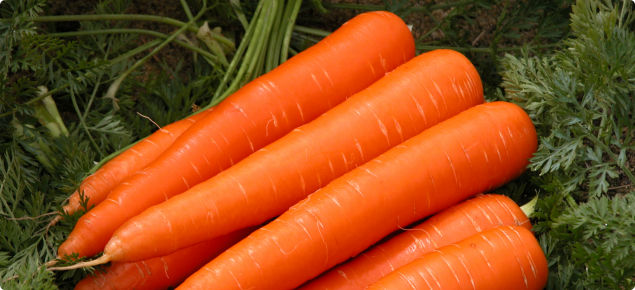Biosecurity alert: Candidatus Liberibacter solanacearum associated with apiaceous crops
In 2017, the Candidatus Liberibacter solanacearum haplotypes D and E were detected in imported parsley seed in New South Wales (NSW). This is the first time this bacterium has been detected in Australia. These haplotypes are not associated with tomato-potato psyllid and the potato disease 'zebra chip'.
Australia introduced emergency measures in April 2017 following detection of this bacterium in celery, parsley and parsnip seed overseas - which required these seeds to be tested or undergo hot water treatment prior to entry into Australia. The parsley seeds in question were imported prior to the implementation of these measures.
Currently the NSW Department of Primary Industries and Regional Development is tracing the distribution of the seeds within NSW and to other jurisdictions, which will give an indication of their overall distribution. It has not been found in any Australian crops and is not considered present in Australia.
For current updates on Candidatus Liberibacter solanacearum detections refer to the NSW Department of Primary Industries website.
What plants are affected?
Currently five haplotypes of Candidatus Liberibacter solanacearum have been described: haplotypes A and B from solanaceous crops such as capsicum, eggplant, potato and tomato; and in apiaceous crops, haplotype C from carrots, and haplotypes D and E mostly from carrots and celery.
It is important that detection of the bacterium on imported parsley seed is not confused with the disease known as zebra chip in potatoes, which is associated with haplotypes A and B and the tomato-potato psyllid (Bactericera cockerelli). This disease is not known to occur in Australia.
The tomato-potato psyllid is the causal agent of zebra chip. While the tomato-potato psyllid vector was detected in Western Australia in 2017, extensive testing of psyllids and host plants has not detected Candidatus Liberibacter solanacearum.
What do I look for?
Candidatus Liberibacter solanacearum symptoms associated with apiaceous crops
- Although parsley could be a major host for haplotypes D and E, the lack of reported disease problems with parsley may suggest that symptoms are not obvious in this plant.
- The bacterium can cause serious damage to carrot, celery, chervil, fennel, and parsnip.
- Disease symptoms in infected carrots include leaf curling; yellowish, bronze and purplish discoloration of leaves; stunting of the carrot shoots and roots; and proliferation of secondary roots.
- Diseased celery plants show an abnormal number of shoots, stem curling and yellowing.
- Disease symptoms in infected parsley and parsnip plants include yellowing, proliferation and redness of leaves.
Candidatus Liberibacter solanacearum symptoms associated with solanaceous crops
- Candidatus Liberibacter solanacearum pest data sheet
- Candidatus Liberibacter solanacearum and TPP
- NSW Department of Primary Industries website
Biosecurity and reporting
The Australian Government advises home gardeners to harvest and eat their parsley before it goes to seed. Parsley that has been grown from infected seeds does not pose any food safety or human health issues. It is safe to eat.
If you are a plant wholesaler or obtained imported Italian Giant parsley seed before April 2017, please contact the Exotic Plant Pest Hotline on 1800 084 881.
Candidatus Liberibacter solanacearum is a prohibited organism for Western Australia. It is important that any suspect infections are reported. Early detection and eradication will help protect the Western Australian horticultural industries.

